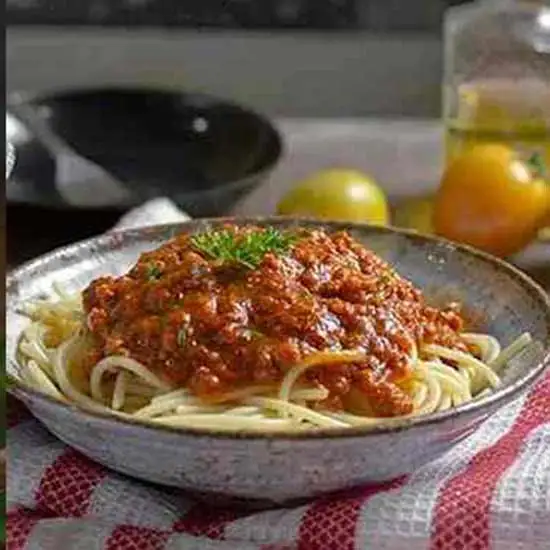Have you ever tried your hand at a cannabis-based recipe? Welcome to our cannabis-infused culinary adventure! Whether you’re a seasoned cannabis connoisseur or a curious beginner, exploring the world of cooking with cannabis can be a rewarding and enjoyable experience. Let’s learn how to make cannabutter, cannabis oil & pasta sauce.
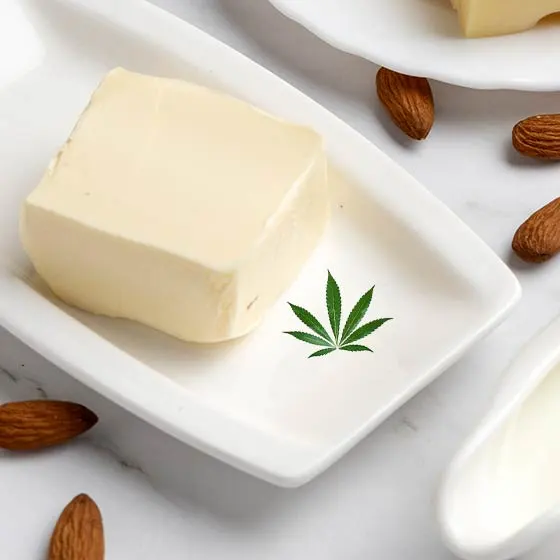
Cannabutter
Ingredients
- 1 cup (2 sticks) unsalted butter
- 1 cup ground cannabis flower (decarboxylated)
Suggested Flower Strains
Prepare the Cannabis
Before infusing the butter, it’s essential to activate the cannabinoids in the cannabis through a process called decarboxylation. Heat the cannabis at a low temperature to convert the non-psychoactive THCA (tetrahydrocannabinolic acid) into psychoactive THC (tetrahydrocannabinol). To decarboxylate your cannabis, preheat your oven to 240°F (115°C). Spread the ground cannabis evenly on a baking sheet lined with parchment paper and bake for 30-40 minutes, stirring occasionally, until lightly toasted and fragrant. This step is crucial for maximizing the potency of your cannabutter.
Melt the Butter
In a saucepan, melt the unsalted butter over low heat. Use unsalted butter to avoid any unwanted flavors in the final product. Stir the butter occasionally as it melts to ensure even heating and prevent burning.
Infuse the Cannabis
Simmer the Mixture
Reduce the heat to low and let the butter and cannabis mixture simmer gently for 2-3 hours. Stir the mixture occasionally to prevent it from sticking to the bottom of the saucepan and ensure an even infusion. It’s essential to maintain a low simmer throughout the process and avoid letting the mixture come to a boil, as excessive heat can degrade the cannabinoids and diminish the potency of the cannabutter.
Strain the Mixture
After simmering, remove the saucepan and let the mixture cool slightly. Once cooled to a safe temperature, strain the mixture through a fine mesh strainer or cheesecloth into a heatproof container. This step removes the plant material and ensures a smooth, pure cannabutter without any gritty texture.
Cool and Solidify
Allow the strained cannabutter to cool to room temperature, then transfer it to the refrigerator to solidify. Depending on the temperature of your refrigerator, this process may take several hours or overnight. Once the cannabutter has solidified, it’s ready to use in your favorite recipes.
By following these simple steps, you can create your homemade cannabutter that’s perfect for adding a potent punch of cannabis-infused goodness to a wide range of culinary creations. Whether baking decadent desserts, sautéing savory dishes, or spreading it on toast, cannabutter offers endless possibilities for elevating your culinary experience. Enjoy experimenting with this versatile ingredient and discovering new ways to incorporate cannabis into your cooking repertoire!
Cannabis-Infused Olive Oil
Making cannabis-infused olive oil is a straightforward process, similar to making cannabutter. Here’s a simple recipe to guide you through the steps:
Ingredients
- 1 cup extra virgin olive oil
- 7-10 grams of decarboxylated cannabis flower (ground)
Cannabis Strains for this Recipe
Strains with Herbal and Earthy Flavors
Citrusy and Fruity Strains
Herbal and Spicy Strains
Balanced Terpene Profiles
Unique Flavors
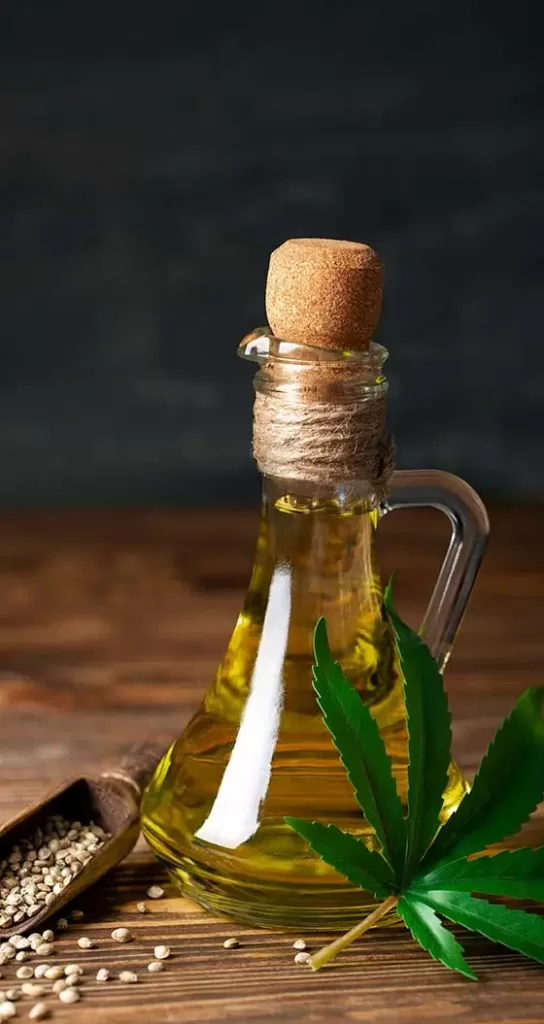
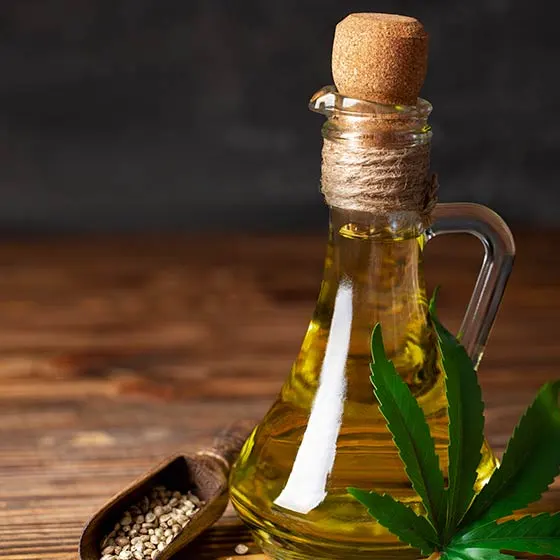
When choosing a strain for infusing into olive oil, consider your preferences regarding flavor and aroma. Additionally, take into account the cannabinoid content, especially if you’re seeking specific effects such as relaxation, euphoria, or pain relief. Keep in mind that the potency of the final infused olive oil will depend on factors such as the amount of cannabis used and the duration of infusion, so adjust accordingly based on your tolerance and desired dosage.
Decarboxylate the Cannabis
Preheat your oven to 240°F (115°C).
Grind the cannabis flower coarsely.
Spread the ground cannabis evenly on a baking sheet lined with parchment paper.
Bake for 30-40 minutes, stirring occasionally, until lightly toasted and fragrant. This process activates the cannabinoids, making them more bioavailable.
Infuse the Olive Oil
Heat the olive oil on low heat in a saucepan or double boiler. Be careful not to let it boil.
Once the oil is warm, add the decarboxylated cannabis to the saucepan.
Stir the mixture gently to ensure the cannabis is below the oil.
Let the mixture simmer on low heat for 1-2 hours, stirring occasionally, allowing the cannabinoids to infuse into the oil.
Strain the Mixture
After simmering, remove the saucepan and let the mixture cool slightly.
Once cooled to a safe temperature, strain the mixture through a fine mesh strainer or cheesecloth into a heatproof container. Straining removes the plant material and ensures a smooth, pure cannabis-infused olive oil.
Store the Oil
Dosage
Remember to calculate the dosage of your cannabis-infused olive oil based on the potency of your cannabis and the desired serving size. Start with a small amount to gauge the cannabis potency before using larger doses.
Once you have your cannabis-infused olive oil ready, you can use it in a variety of culinary applications, such as salad dressings, pasta sauces, marinades, and more. Enjoy experimenting with this versatile ingredient and discovering new ways to incorporate cannabis into your cooking repertoire!
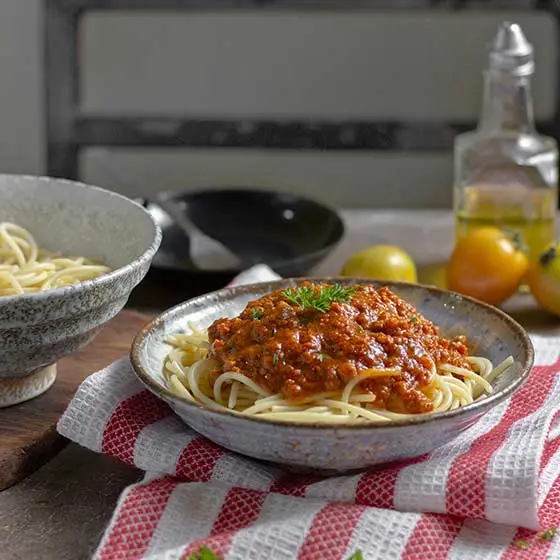
Cannabis-Infused Pasta Sauce
Elevate your pasta night with this flavorful cannabis-infused pasta sauce, bursting with the flavors of tomatoes, onions, garlic, and cannabis-infused olive oil. This sauce adds a delightful twist to your favorite pasta dishes. Let’s delve into the details of creating this savory sensation step by step:
Ingredients
- 2x tablespoons olive oil
- 1x onion, finely chopped
- 2x cloves garlic, minced
- 1x can (28 ounces) crushed tomatoes
- 1/4 cup cannabis-infused olive oil
- Salt and pepper to taste
- Fresh basil leaves, chopped (optional)
When selecting strains for infusing into pasta sauce, consider flavors and aromas that complement the dish’s overall taste profile. Here are some cannabis strains that could work well for cannabis-infused pasta sauce:
Herbal and Earthy Strains
OG Kush (earthy and pine flavors)
Northern Lights (herbal and spicy notes)
Citrusy and Tangy Strains
Lemon Haze (citrusy lemon aroma)
Tangie (tangerine flavor)
Sweet and Fruity
Pineapple Express(tropical flavors)
Balanced and Versatile Strains
Girl Scout Cookies (GSC) (blend of sweet and earthy flavors)
Blue Dream(mix of sweet berry and herbal flavors)
Sauté Aromatics
Heat the olive oil in a saucepan over medium heat. Add the chopped onion and minced garlic, and sauté until softened and fragrant. This step forms the flavorful base of the sauce, infusing it with the savory essence of the aromatics.
Add Crushed Tomatoes
Stir in the crushed tomatoes, along with any juices from the can. The crushed tomatoes provide the body and texture of the sauce, delivering a rich tomato flavor that pairs perfectly with pasta.
Infuse with Cannabis Olive Oil
Simmer and Stir
Reduce the heat to low and let the sauce simmer gently for 20-30 minutes, stirring occasionally. It allows the flavors to meld together and give the desired consistency to the sauce. Keep an eye on the sauce as it simmers, adjusting the heat to prevent sticking or burning.
Season to Taste
Once the sauce has simmered to perfection, season it with salt and pepper to taste. Taste the sauce and adjust the seasoning as desired, adding more salt and pepper if required. For an extra burst of freshness, stir in chopped fresh basil leaves just before serving.
Serve and Enjoy
Ladle the cannabis-infused pasta sauce over your favorite pasta noodles, whether making spaghetti, penne, or linguine. Garnish with additional fresh basil leaves if desired, and enjoy the delicious flavors of this homemade cannabis-infused creation.
General Guidelines for Cannabis Cooking
Start Low, Go Slow
Decarboxylation
Decarboxylation is the process of heating cannabis to activate the cannabinoids, such as THC and CBD, that provide the desired effects. Before incorporating cannabis into your recipes, be sure to decarboxylate it by heating it in the oven at a low temperature (around 240°F or 115°C) for about 30-40 minutes. This step ensures that the cannabinoids are fully activated and potent.
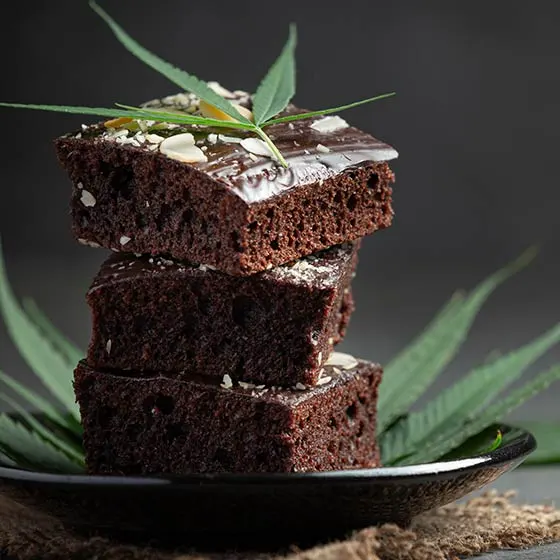
Choose the Right Strain
Different cannabis strains contain varying levels of cannabinoids and terpenes, which contribute to their unique effects and flavors. Consider the desired outcome of your recipe when selecting your cannabis. For example, strains high in THC may produce more potent psychoactive effects. Alternatively, cannabis strains high in CBD may provide more therapeutic benefits without the intoxicating effects.
Use Quality Ingredients
Like in traditional cooking, using high-quality ingredients can make a big difference in the outcome of your cannabis-infused dishes. Opt for fresh, organic ingredients whenever possible to ensure the best flavor and quality.
Infusion Methods
There are several methods for infusing cannabis into recipes, including using cannabis-infused oils, butter, tinctures, or concentrates. Choose the one that best suits your recipe and desired outcome. For example, cannabis-infused oils are great for savory dishes like pasta sauces or salad dressings, while cannabis-infused butters are perfect for baked goods like cookies or brownies.
Temperature Control
When cooking with cannabis, it’s important to maintain precise temperature control to avoid degrading the cannabinoids and terpenes. Avoid cooking at high temperatures, as this can diminish the potency of the cannabis and result in a less effective infusion.
Be Mindful of the Dosage
Keep track of the amount of cannabis used in your recipes and calculate the dosage accordingly. Consider the potency of your cannabis and the number of servings in your recipe to determine the appropriate dosage per serving. Remember, it’s always easier to add more cannabis later than to remove it from a recipe that’s too potent.
Label and Store Properly
If you’re making cannabis-infused foods for later consumption or sharing with others, be sure to label them clearly and store them securely. Keep cannabis-infused foods out of reach of children and pets, and store them in a cool, dark place to preserve their potency and freshness.
By following these guidelines, you can enjoy the creative process of cooking with cannabis while ensuring a safe and enjoyable experience for yourself and others. Experiment with different recipes, techniques, and strains to discover new flavors and effects, and most importantly, have fun in the kitchen!
Conclusion
Consider infusing olive or coconut oil for savory dishes, honey for sweet treats, or gummies for easy dosing. Elevate your cooking with cannabis-infused salad dressings, guacamole, or pesto, or enjoy a nutritious boost with cannabis-infused smoothies. cannabis-infused buttercream frosting, chocolate truffles, or homemade gummies are great for dessert. Experiment with different ingredients, flavors, and dosages to create delicious and unique cannabis-infused dishes that suit your taste and preferences, always remembering to consume responsibly and start with low doses.
So, gather your ingredients, fire up the stove, and get ready to experience the delicious delights of cooking with cannabis. Happy cooking!
The information provided is not a substitute for professional medical advice, diagnosis, or treatment. Consult with a qualified healthcare professional for personalized advice based on your medical condition.


